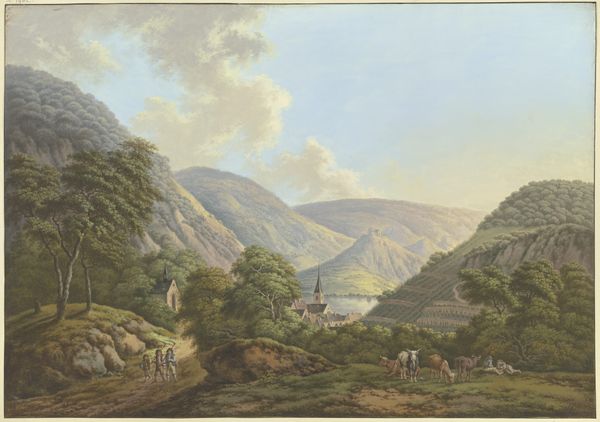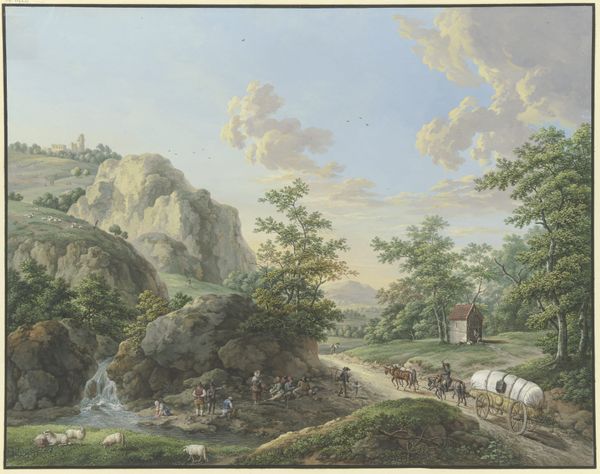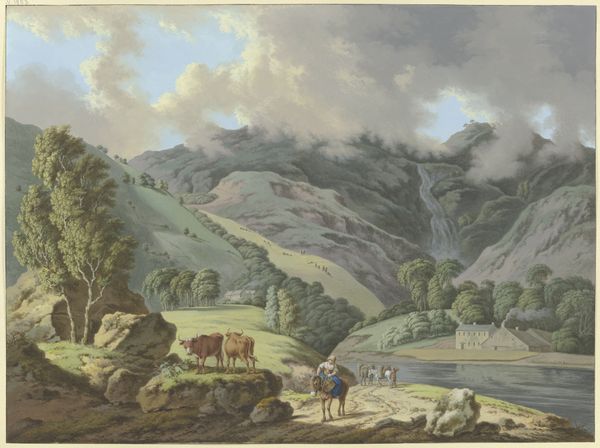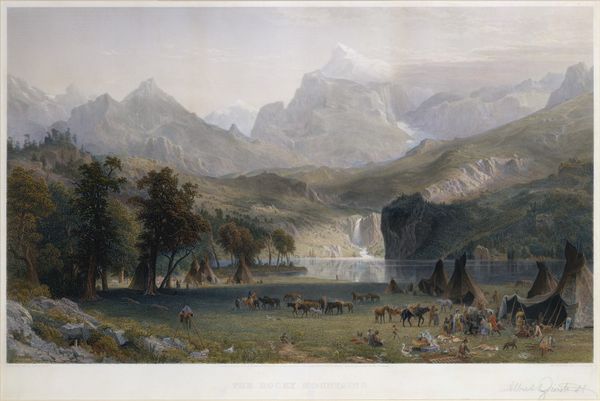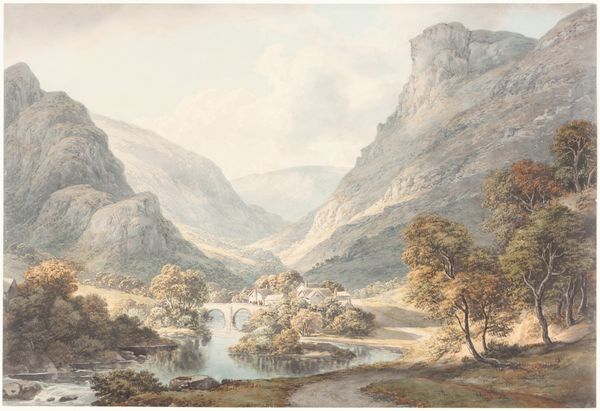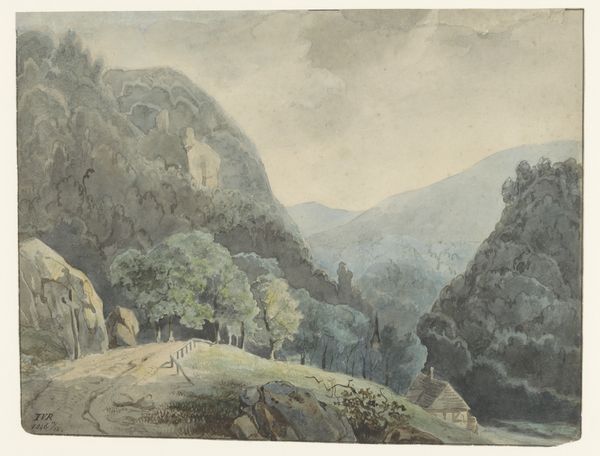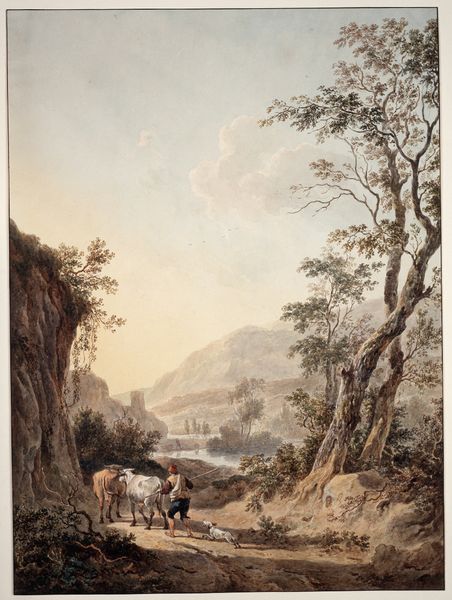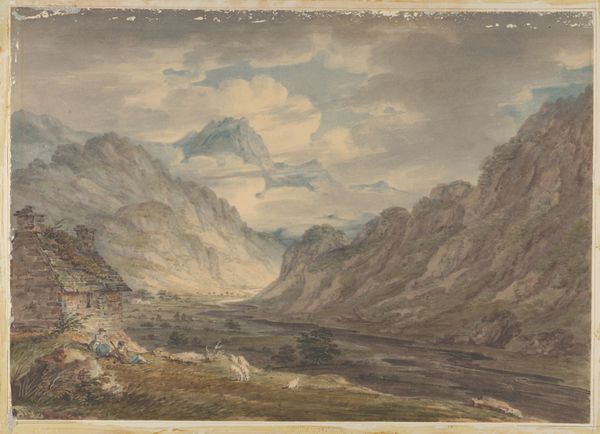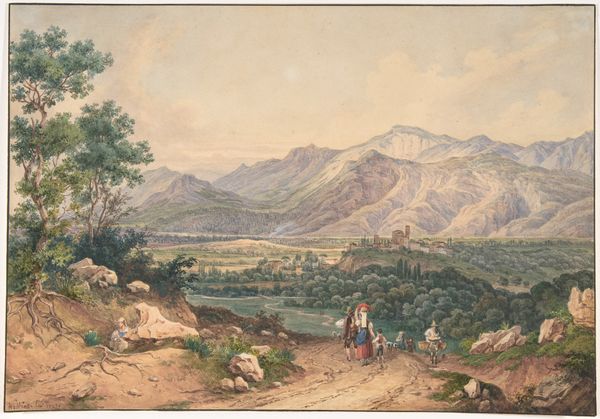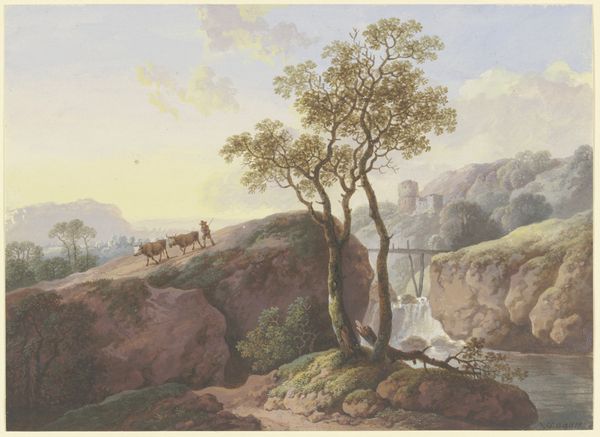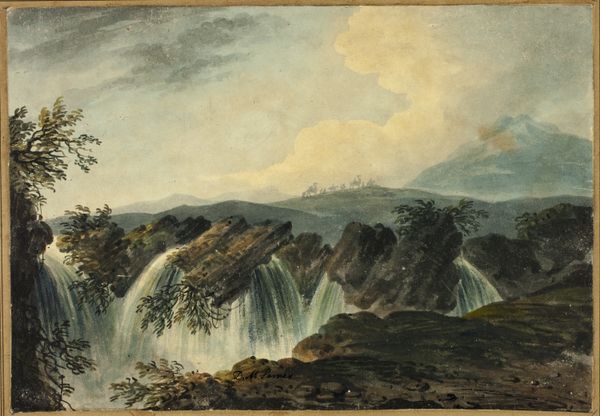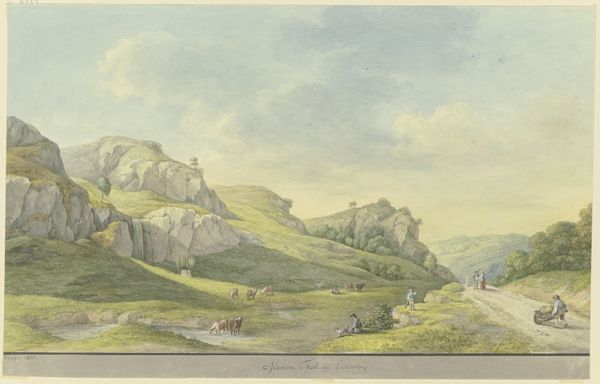
Dimensions: height 265 mm, width 363 mm
Copyright: Rijks Museum: Open Domain
Curator: This delicate watercolor painting from 1869 is titled "Gezicht op een waterval en landweg in Preanger op Java," created by Johan Conrad Greive. The work currently resides here at the Rijksmuseum. Editor: The image possesses a serene almost dreamy quality. The muted colors and meticulous details evoke a sense of tranquility that seems both familiar and exotic. It looks as though one were transported back in time. Curator: It’s fascinating to observe how Greive captured the Javanese landscape with such detail. Paintings such as these provided Europeans with a vision of the colonies, shaped by artistic interpretation, yet aiming to convey the experience of encountering these regions. You can sense the effort in carefully detailing both the natural and constructed spaces within the landscape. Editor: Precisely. The waterfall in the background might be interpreted as a symbol of purity and the power of nature, but observe how it seems juxtaposed against the road. That road represents something man-made, perhaps progress or encroachment upon a pristine natural world. Do you get the sense of an elegiac mood here? Curator: Absolutely, but one needs to acknowledge how paintings like these also functioned within the framework of colonial administration and power structures. These idyllic representations, while appearing neutral, often served the interests of empire by shaping perceptions of colonized lands and its peoples back in Europe. Look closely and one sees travelers in the road, who must certainly represent agents of the Dutch East India Company. Editor: Even so, doesn’t the light have such an ethereal quality to it? Notice how the artist directs your eye from that tumbling fall of water to those figures along the road through skillful tonal arrangements. I read a deep fascination for the exotic melding with everyday existence. It conveys this powerful longing for somewhere distant. Curator: That pull of exoticism was, no doubt, carefully marketed. And I think that is why paintings like this remain so compelling for us to interpret. They prompt consideration about historical power structures. The perspective represented is of someone observing from afar and creating a reality that may not fully align with that lived by people in Java. Editor: It's truly striking how much symbolism can be unearthed from this outwardly calm landscape painting, making it a far more complex work than one might first imagine. Curator: Indeed. By examining art through historical context, we discover these nuances. It reveals the painting not only as a visual piece but as a historical document reflective of complex cultural exchanges and colonial ideologies.
Comments
No comments
Be the first to comment and join the conversation on the ultimate creative platform.
